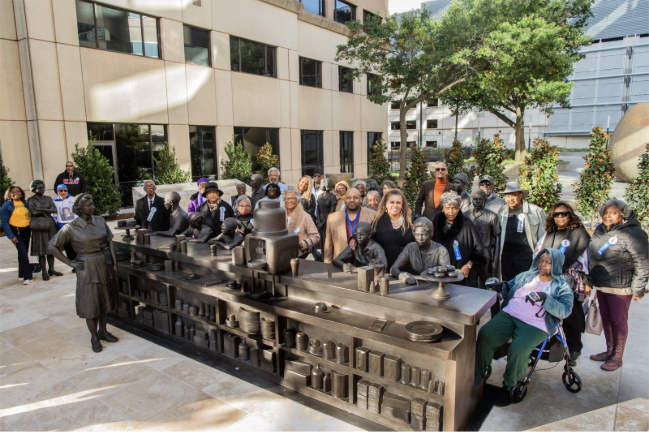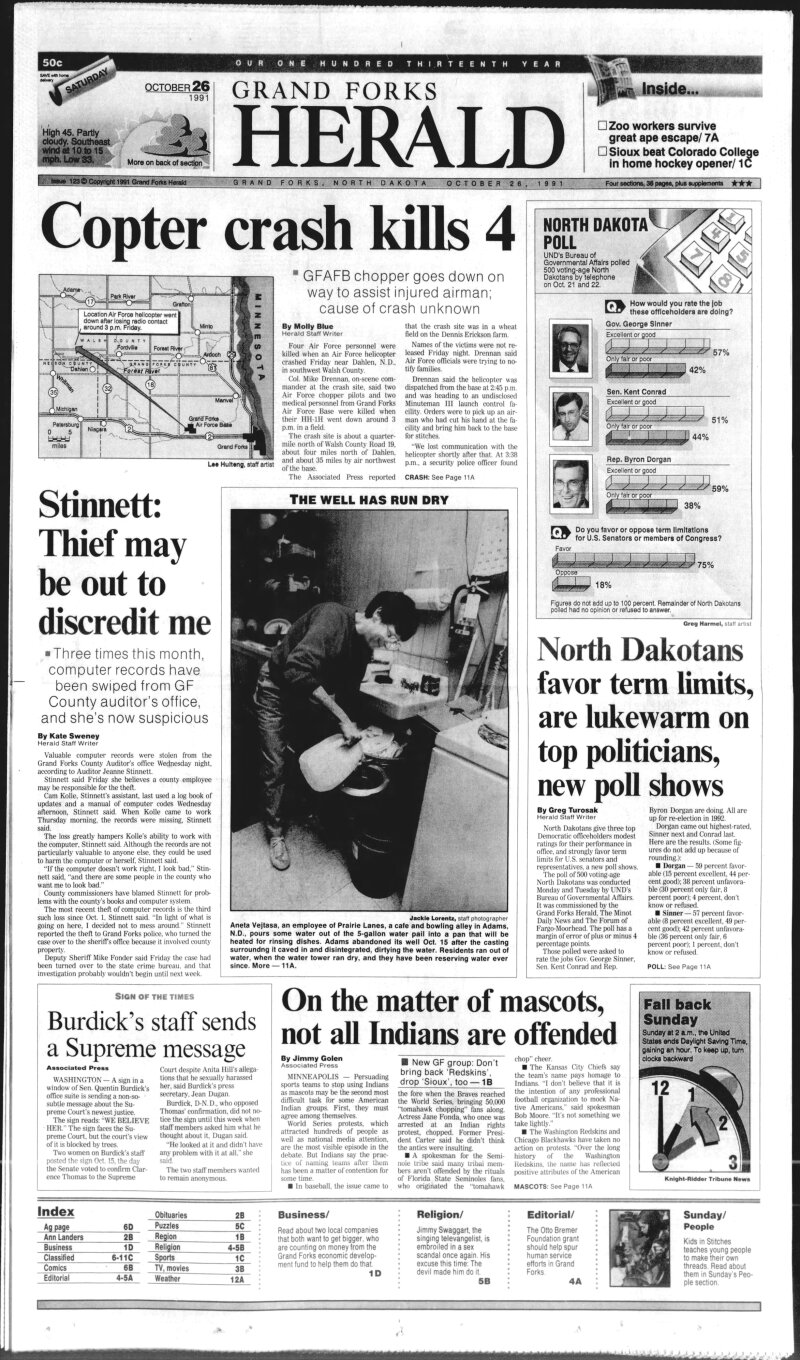UPDATE: Thousands gathered in downtown Oklahoma City on November 1, 2023, to celebrate the dedication of the Clara Luper National Sit-in Plaza, a powerful tribute to the Civil Rights Movement. This landmark event commemorates the courageous actions of Clara Luper and 12 other students who initiated a pivotal sit-in at Katz Drug Store on August 19, 1958, sparking a nationwide wave of protests for racial equality.
The plaza, located at North Robinson Avenue and West Main Street—where the original sit-in took place—features a stunning 4-ton bronze lunch counter, complete with lifelike sculptures of Luper, the original sit-inners, and a Katz Drug Store employee. This art installation serves as a lasting reminder of the struggle for civil rights and the importance of collective action.
During the ceremony, emotional remarks were made by Marilyn Luper Hildreth, Clara Luper’s daughter, who reflected on her mother’s legacy. “For so long, this moment in Oklahoma City has been overlooked in the history books, yet it helped change the nation,” she stated. Hildreth emphasized the significance of the plaza, saying, “This sculpture ensures that future generations will remember that ordinary young people, acting together, can create extraordinary change.”
The dedication ceremony included stirring musical performances from local choirs and impactful speeches from prominent figures, including Oklahoma City Mayor David Holt and community leaders such as Rev. Dr. Lee Cooper Jr. and project developer John Kennedy. The event highlighted the collaborative spirit that characterized the original sit-in movement.
StudioEIS, the acclaimed sculpture and design firm behind the installation, took four years to complete the project. Founder Elliot Schwartz noted, “This project has been one of the most collaborative undertakings in our 50 years. The final work reflects the same spirit of unity that powered the sit-in movement.”
The plaza was entirely funded through private donations from numerous organizations and individuals, including the American Fidelity Foundation and the Chickasaw Nation. Kennedy remarked, “We are proud to recognize the courage and vision of the original 13 sit-inners and their teacher, Ms. Luper. May we never forget that we all have an opportunity to make a difference and that small actions can lead to big change.”
As attendees explored the plaza and the new sculptures, the dedication served as a poignant reminder of the ongoing fight for civil rights and equality. The unveiling of the Clara Luper National Sit-in Plaza not only honors a crucial chapter in Oklahoma’s history but also inspires future generations to continue the work of justice and unity.
The dedication marks a significant moment for Oklahoma City, affirming its role as a birthplace for the sit-in movement and underlining the importance of remembering history to effect positive change in society today.







